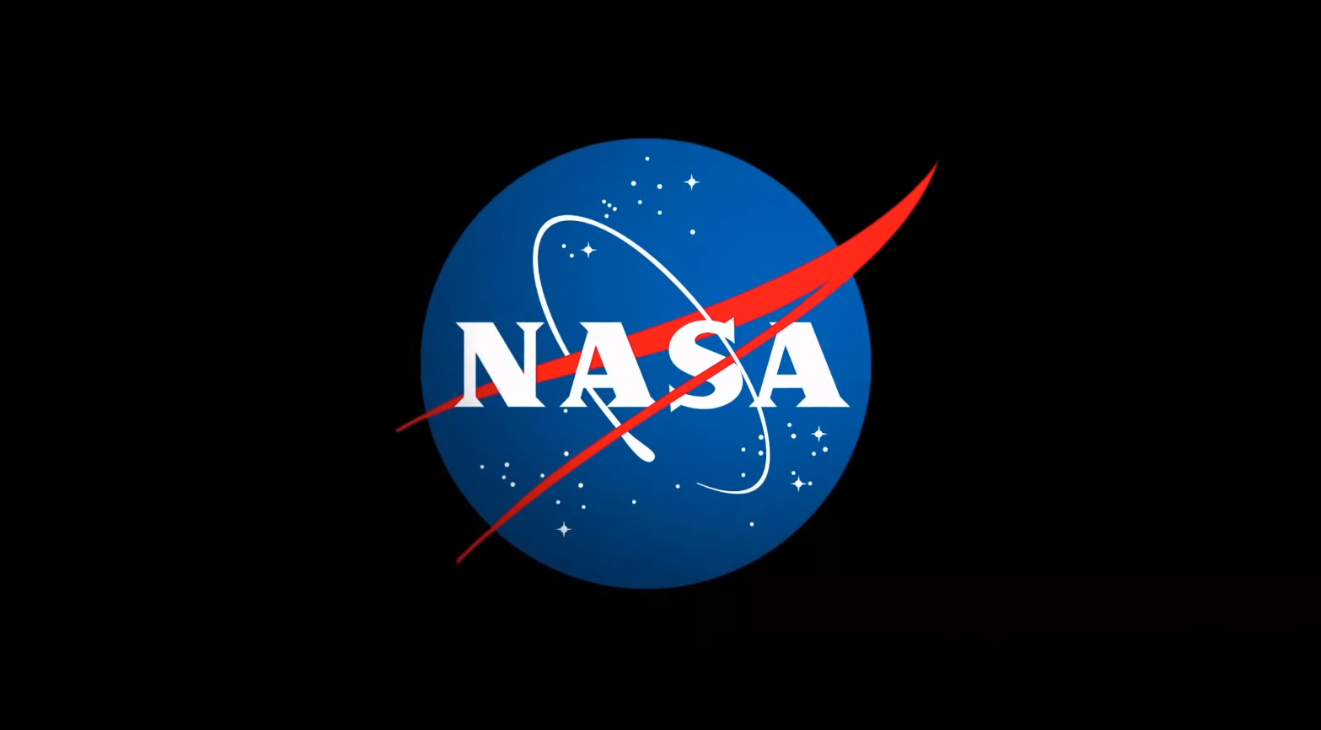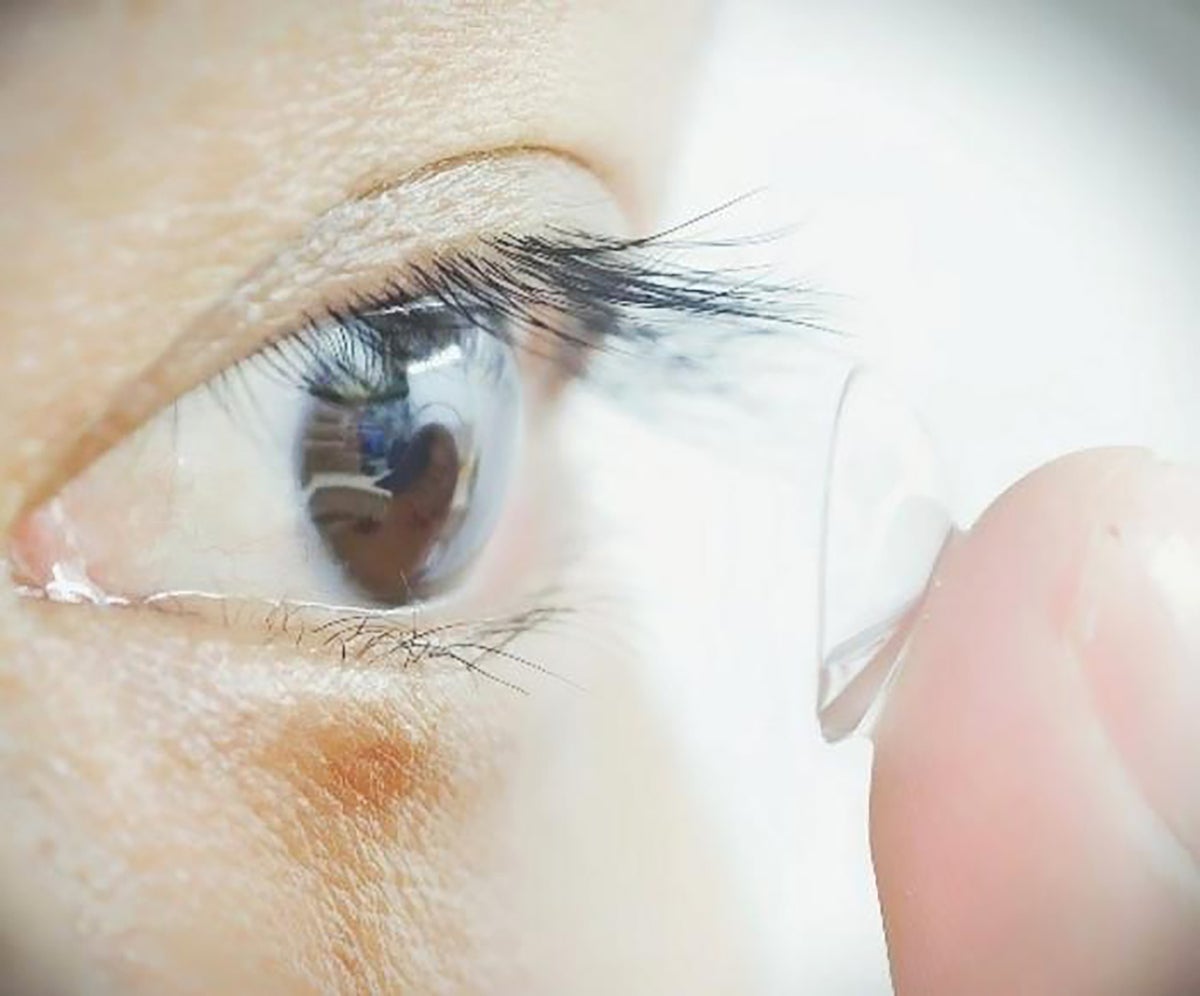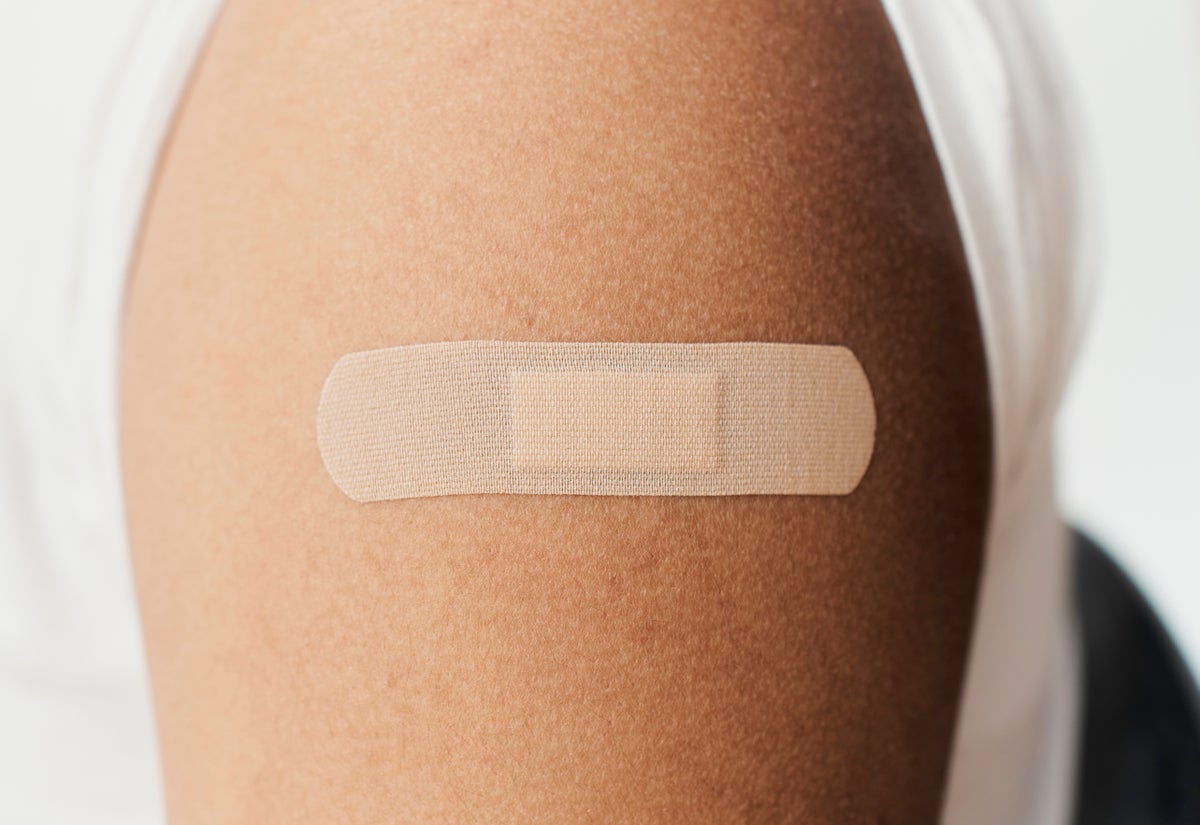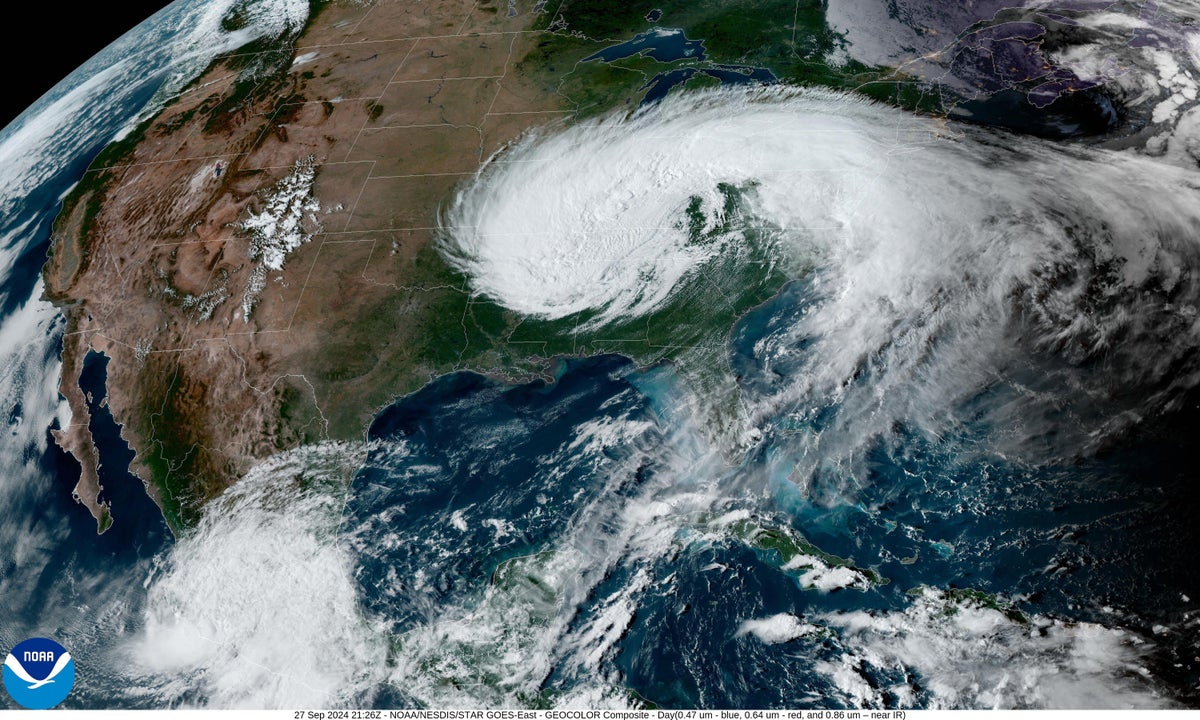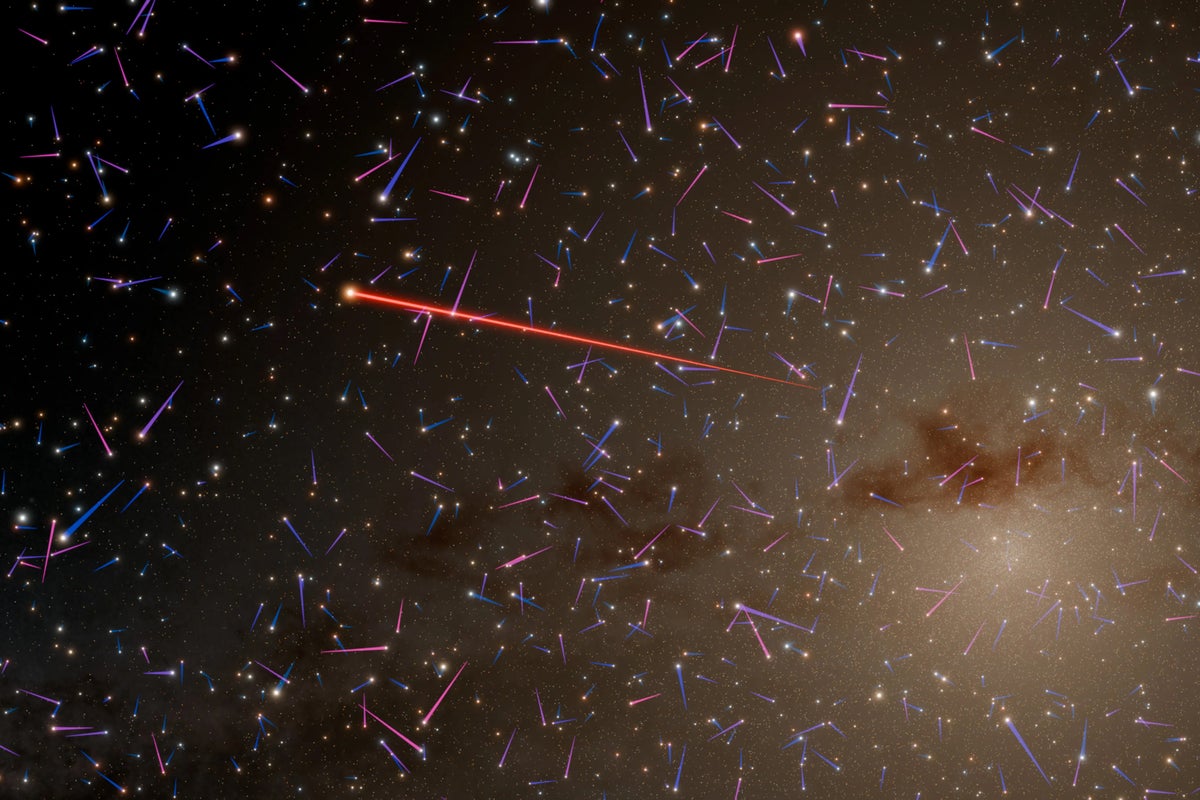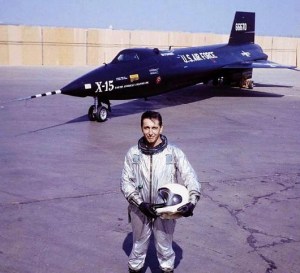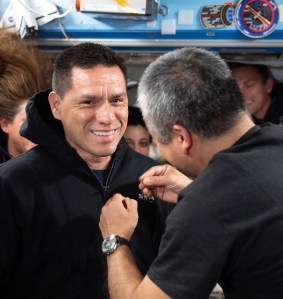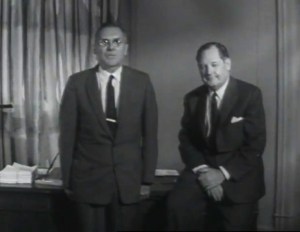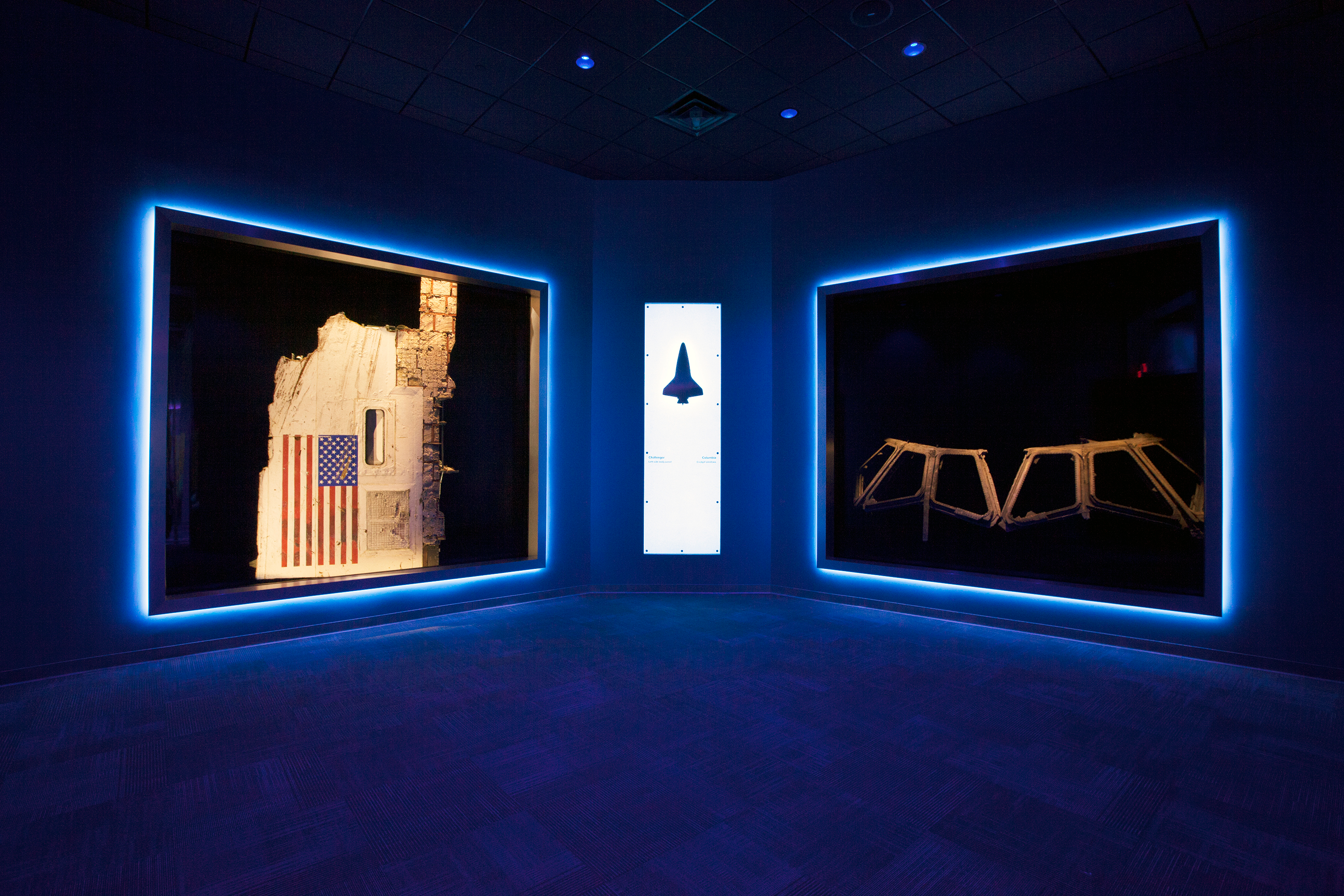40 Years Ago: Space Shuttle Discovery Makes its Public Debut
On Oct. 16, 1983, NASA’s newest space shuttle, Discovery, made its public debut during a rollout ceremony at its manufacturing plant in Palmdale, California. Under construction for three years, Discovery joined NASA’s other two space-worthy orbiters, Columbia and Challenger, and atmospheric test vehicle Enterprise. The rollout ceremony, attended by NASA and other officials, also featured […]
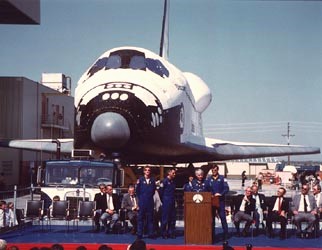
On Oct. 16, 1983, NASA’s newest space shuttle, Discovery, made its public debut during a rollout ceremony at its manufacturing plant in Palmdale, California. Under construction for three years, Discovery joined NASA’s other two space-worthy orbiters, Columbia and Challenger, and atmospheric test vehicle Enterprise. The rollout ceremony, attended by NASA and other officials, also featured the astronauts assigned to Discovery’s first mission, STS-41D, then planned for launch in June 1984. By the time NASA retired Discovery in 2011, it had flown 39 missions, more than any other orbiter, in a career spanning 26 years and flying every type of mission envisioned for the space shuttle. The Smithsonian Institution’s National Air and Space Museum has Discovery on display at its Stephen F. Udvar-Hazy Center in Chantilly, Virginia.
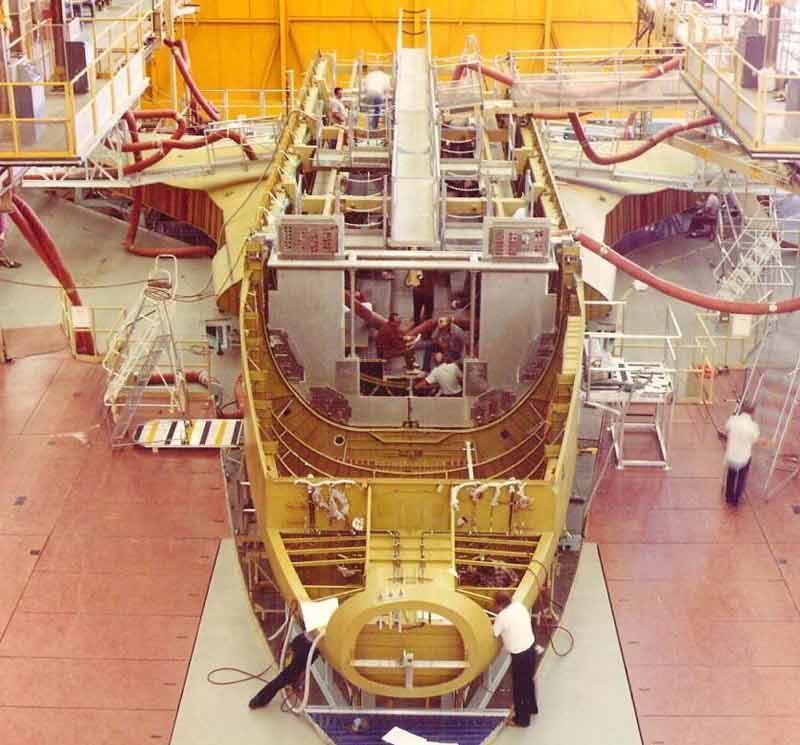
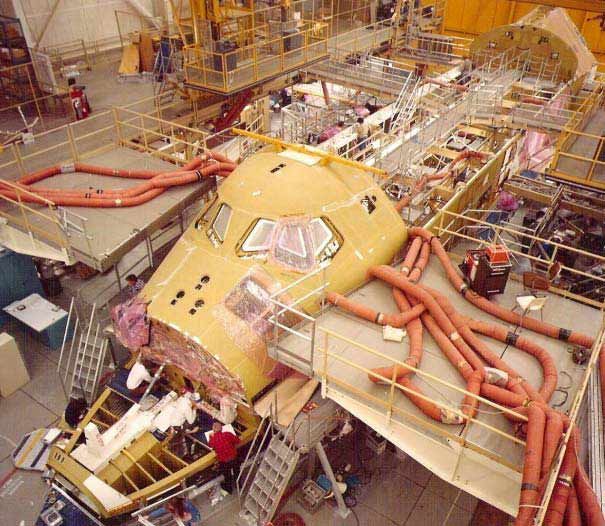

Space shuttle Discovery under construction at Rockwell International’s Palmdale, California, plant in August 1982, left, September 1982, and April 1983.
On Jan. 25, 1979, NASA announced the names of the first four space-worthy orbiters – Columbia, Challenger, Discovery, and Atlantis. Like the other vehicles, NASA named Discovery after historical vessels of exploration – Captain James Cook’s HMS Discovery used during his third and final voyage (1776-1779) and Henry Hudson’s Discovery used during his 1610-1611 search for the Northwest Passage. On Jan. 29, NASA signed the contract with Rockwell International of Downey, California, to build and deliver Discovery. Construction began in June 1980 and finished in February 1983. The newest orbiter included several upgrades from the two earlier vehicles, and through more extensive use of blankets instead of tiles in the thermal protection system, weighed 6,870 pounds less than Columbia. After completion of systems testing, workers prepared Discovery for its first public appearance.
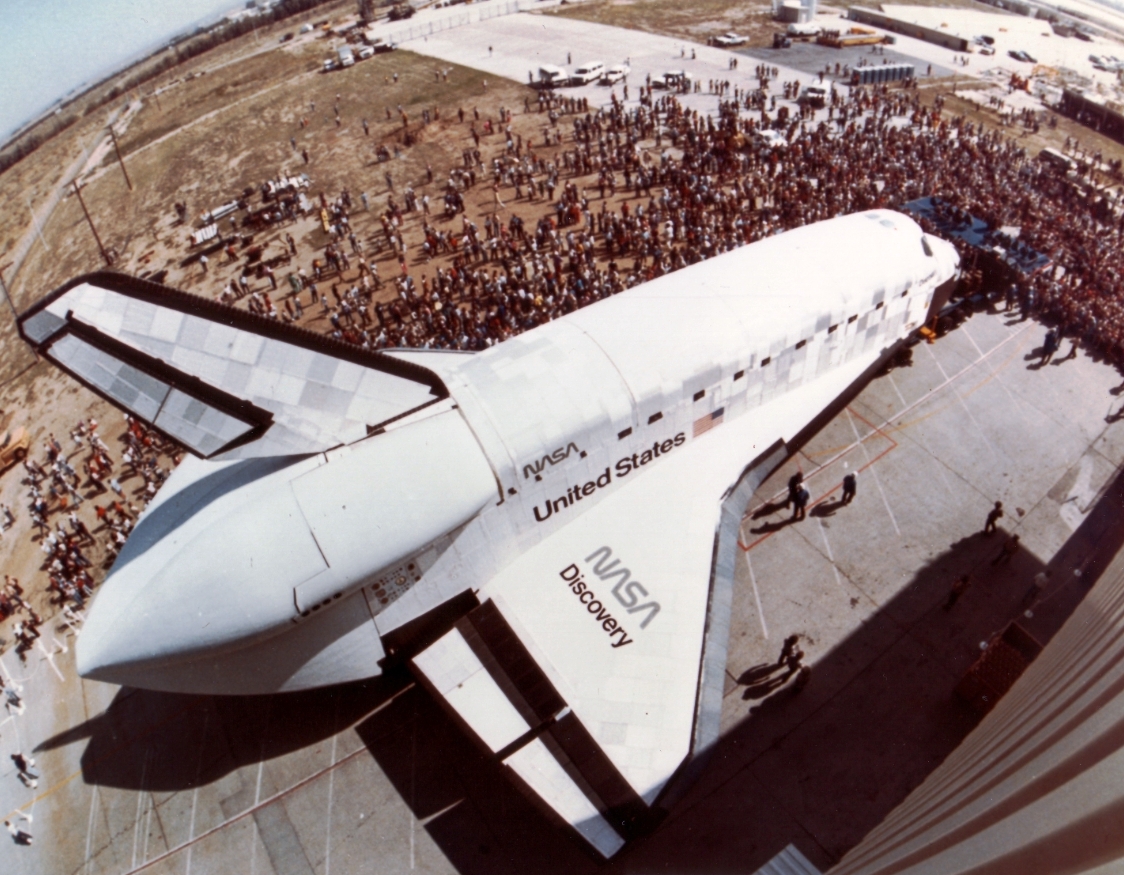

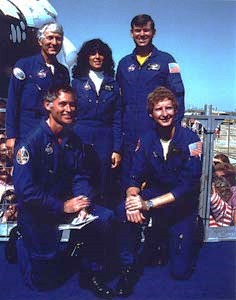
Left: Overhead view of space shuttle Discovery during the rollout ceremony at Rockwell International’s Palmdale, California, plant. Middle: The astronauts assigned to Discovery’s first mission, STS-41D, speak to the assembled crowd. Right: Five of the six STS-41D crew members, Richard M. “Mike” Mullane, kneeling left, Steven A. Hawley, Henry W. “Hank” Hartsfield, standing left, Judith A. Resnik, and Michael L. Coats, pose with Discovery as a backdrop.
The rollout ceremony for Discovery took place on Oct. 16, 1983, at Rockwell International’s Palmdale facility, attended by hundreds of employees and visitors. In addition to NASA and other dignitaries, five of the six the astronauts assigned to Discovery’s first mission also participated, thanking the assembled employees for their hard work in building their spacecraft. They included STS-41D Commander Henry W. “Hank” Hartsfield, Pilot Michael L. Coats, and Mission Specialists Richard M. “Mike” Mullane, Steven A. Hawley, and Judith A. Resnik. Payload Specialist Charles D. Walker could not attend.
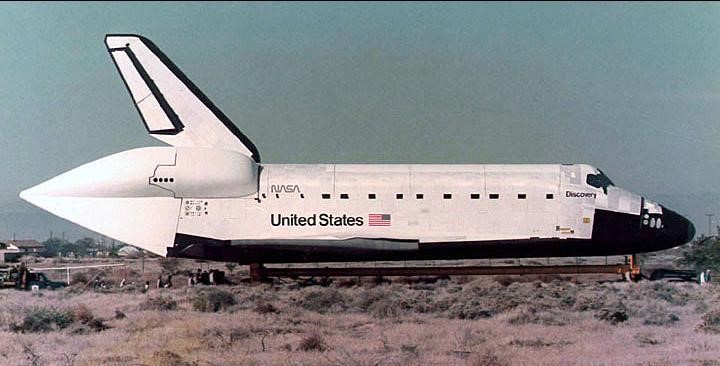
Workers tow Discovery the 36 miles from Palmdale to NASA’s Dryden, now Armstrong, Flight Research Center at Edwards Air Force Base in California’s Mojave Desert.
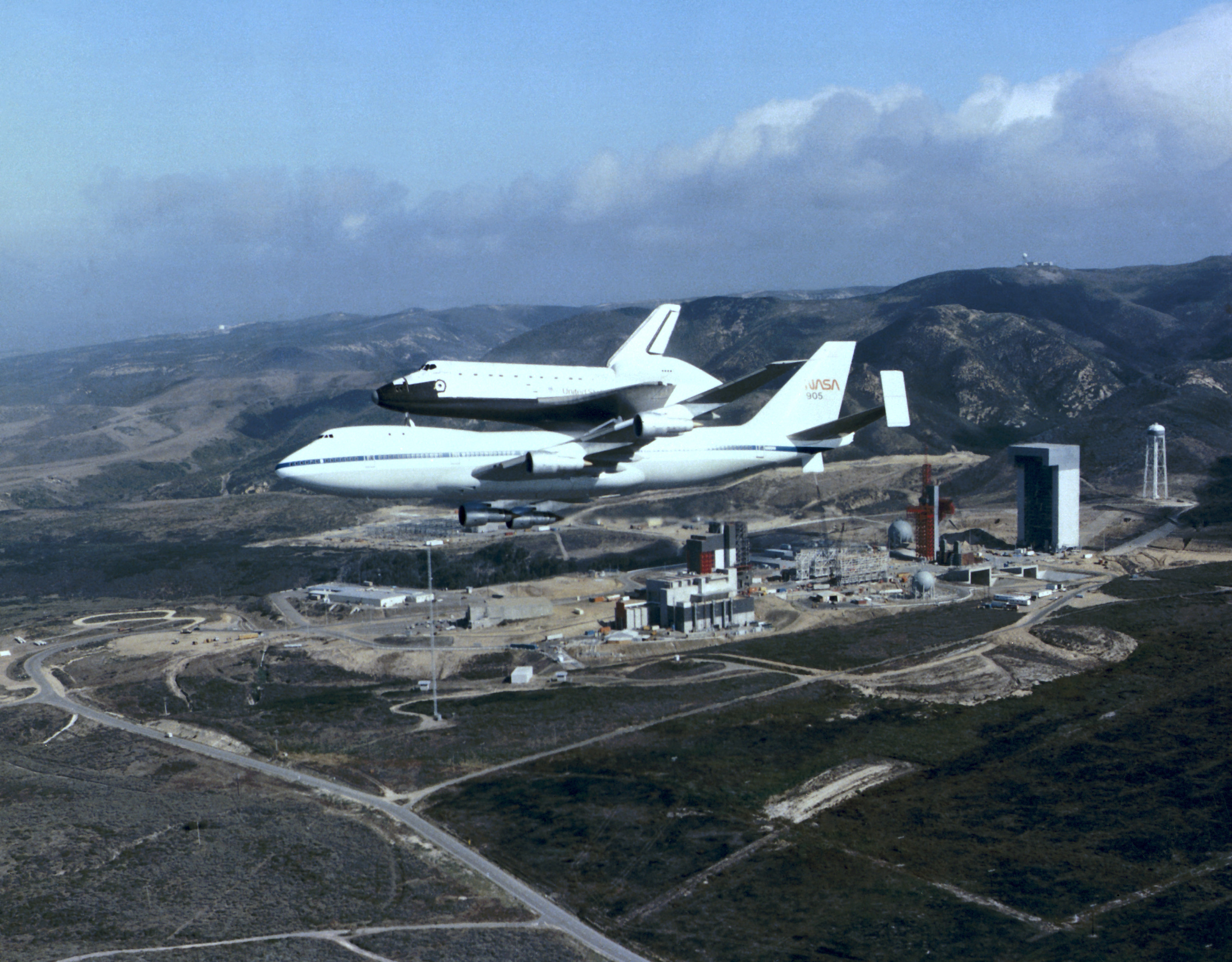
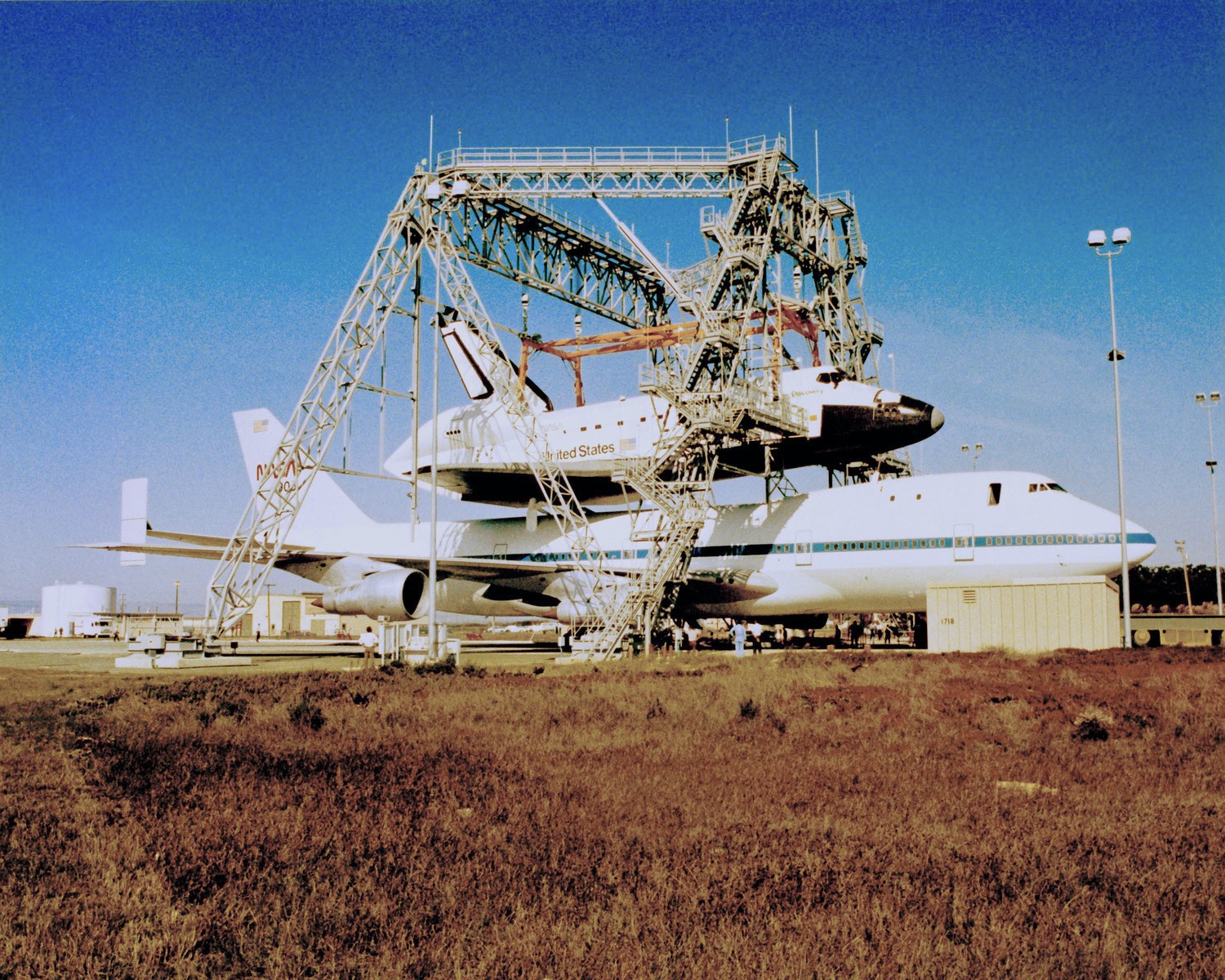
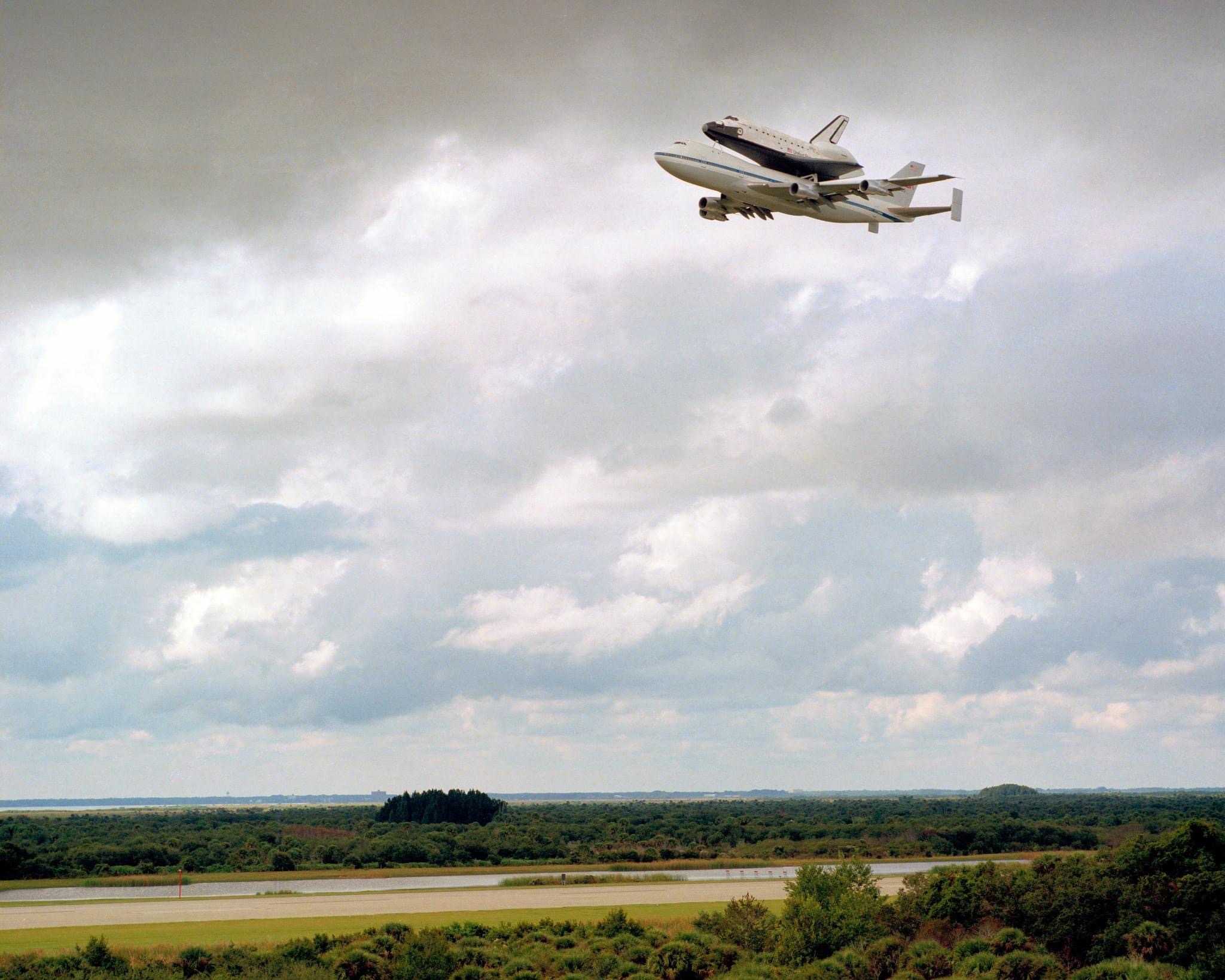
Left: Space shuttle Discovery atop its Shuttle Carrier Aircraft (SCA) flies over Vandenberg Air Force Base. Middle: Workers at Vandenberg use Discovery and its SCA to test the Orbiter Lifting Fixture. Right: Discovery atop the SCA arrives at NASA’s Kennedy Space Center in Florida.
Following the ceremony, workers trucked Discovery 36 miles overland to NASA’s Dryden, now Armstrong, Flight Research Center at Edwards Air Force Base (AFB) in California’s Mojave Desert, the trip taking about 10 hours. In the Mate-Demate Device (MMD), workers placed Discovery atop the Shuttle Carrier Aircraft (SCA), a modified Boeing 747, to begin the ferry flight. The first leg of the journey started on Nov. 6 with a stop at Vandenberg AFB on the California coast, where workers used Discovery and the SCA to test the Orbiter Lifting Fixture, a scaled down version of the MDD planned for use exclusively at Vandenberg. At the time, NASA and the Department of Defense planned to fly space shuttles, with Discovery as the designated orbiter, from Vandenberg’s Space Launch Complex-6 on military polar orbital missions, beginning with STS-62A in 1986. The agencies mothballed those plans following the Challenger accident. From Vandenberg, on Nov. 8 the SCA carried Discovery to Carswell AFB near Ft. Worth for an overnight refueling stop, before continuing to NASA’s Kennedy Space Center in Florida on Nov. 9. The following day, workers towed Discovery to the Orbiter Processing Facility (OPF) for initial receiving inspections. After a move to the nearby Vehicle Assembly Building (VAB) on Dec. 9 for temporary storage, workers returned Discovery to the OPF on Jan. 10, 1984, to begin processing it for its first flight.

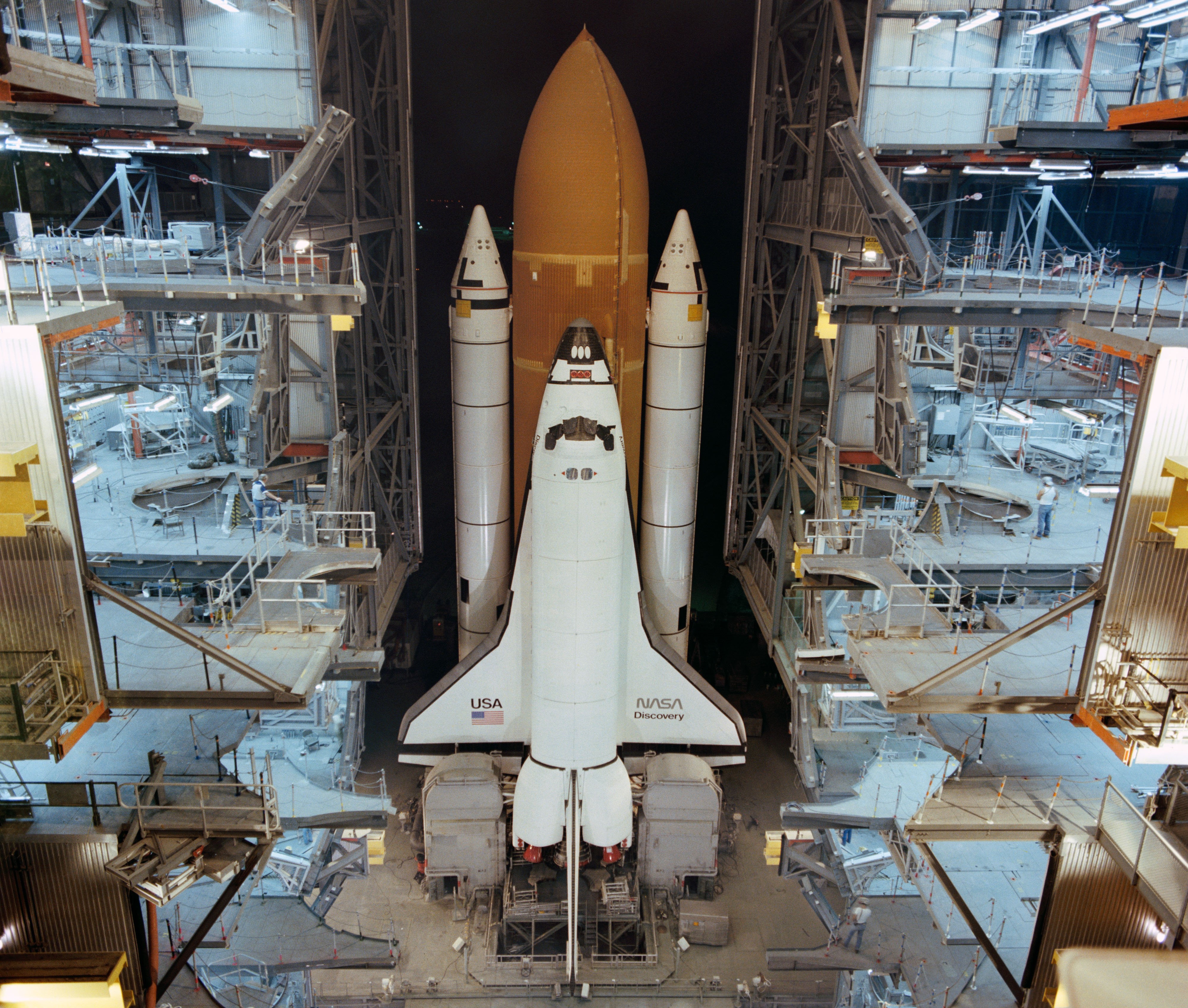
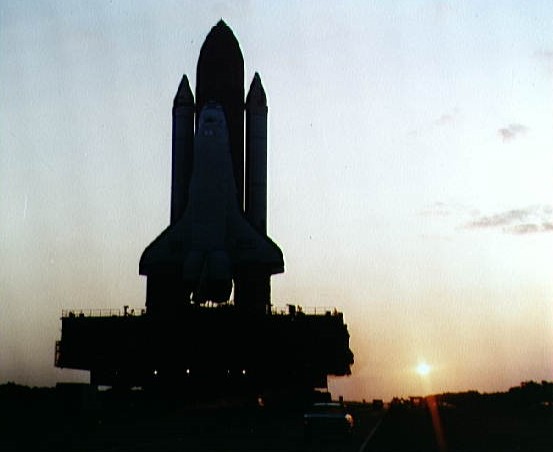
Left: In the Vehicle Assembly Building (VAB) at NASA’s Kennedy Space Center in Florida workers prepare to lift Discovery for mating with its External Tank and twin Solid Rocket Boosters. Middle: The completed stack is ready for its rollout to Launch Pad 39A. Right: Space shuttle Discovery begins its rollout from the VAB to Launch Pad 39A.
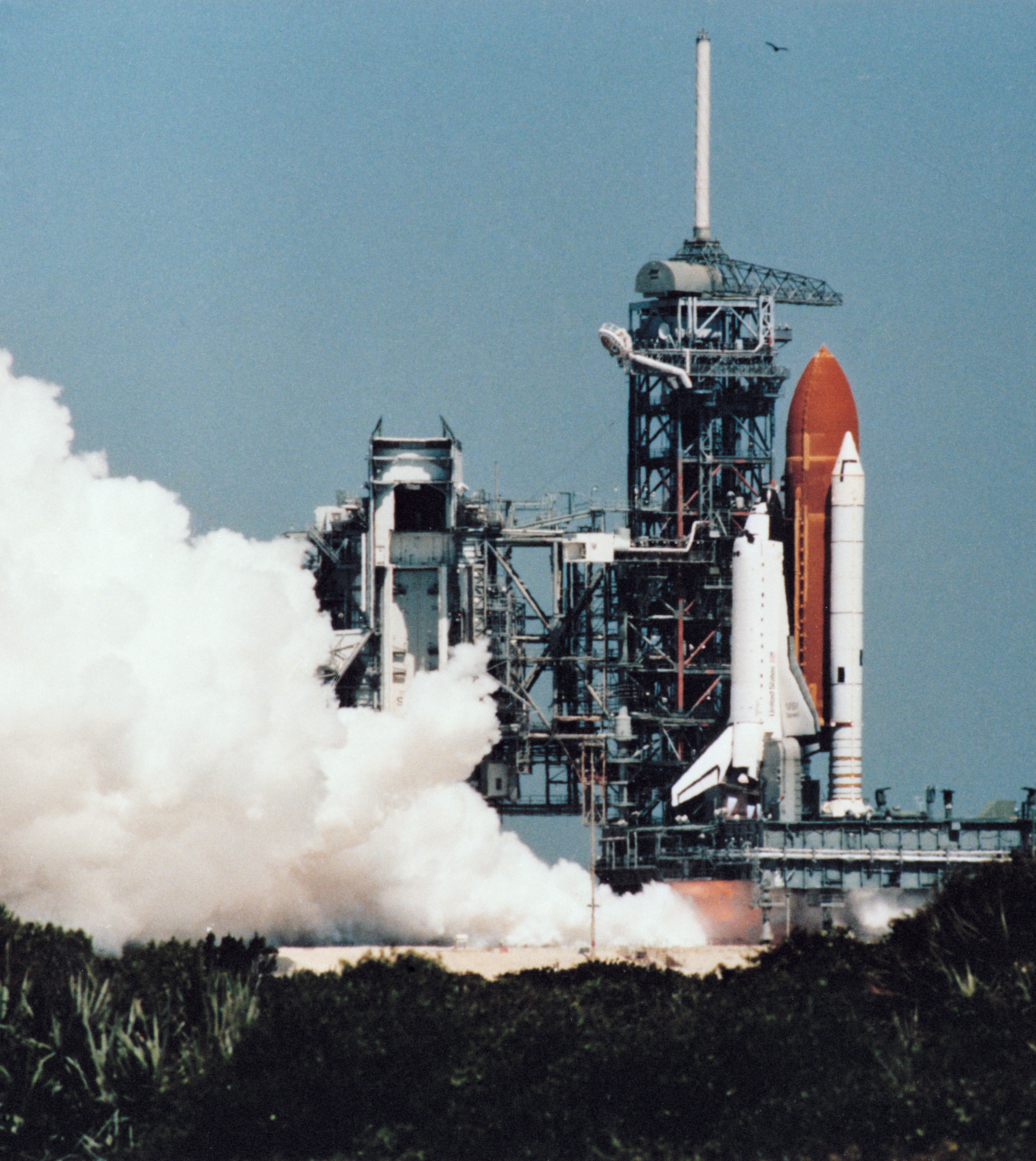
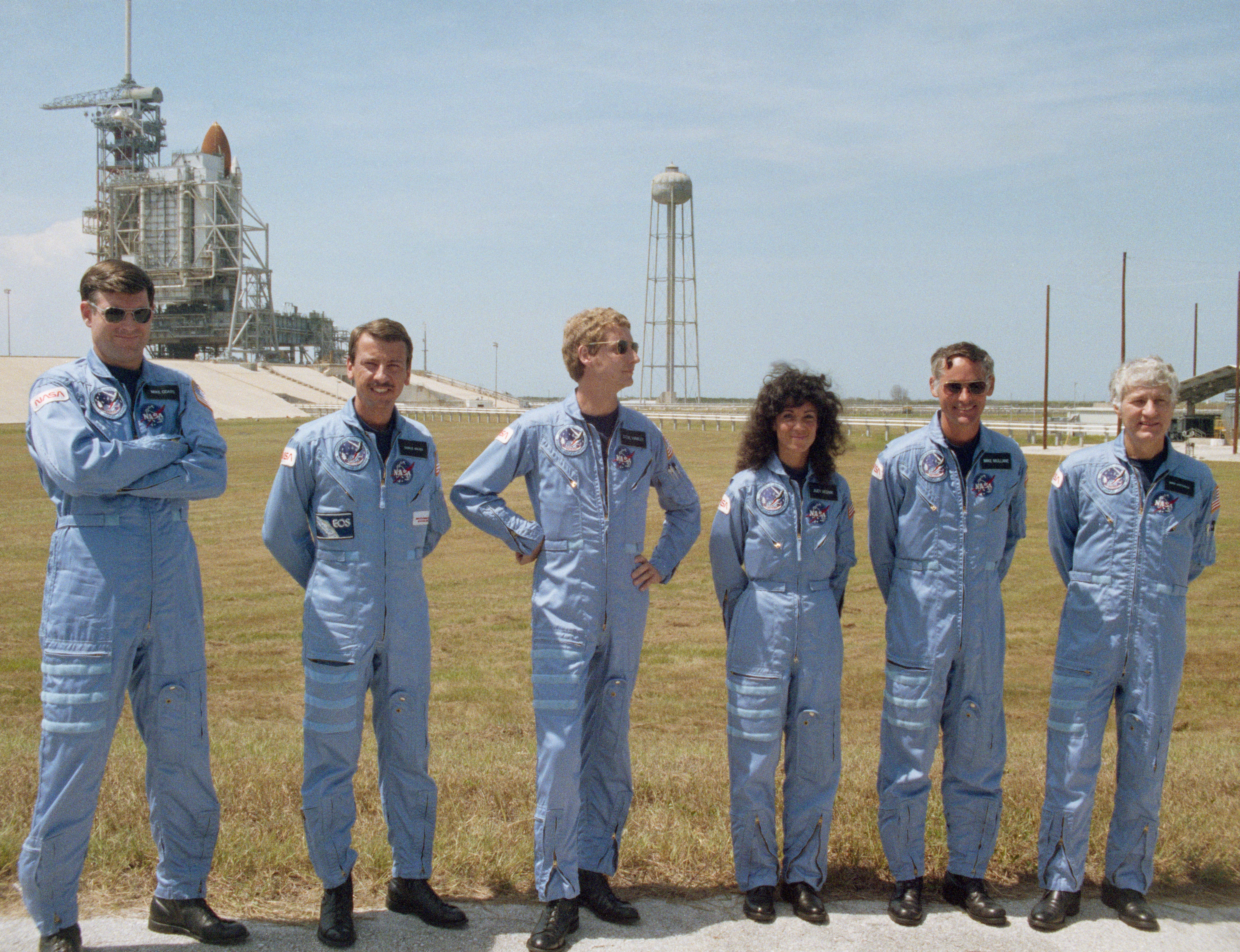
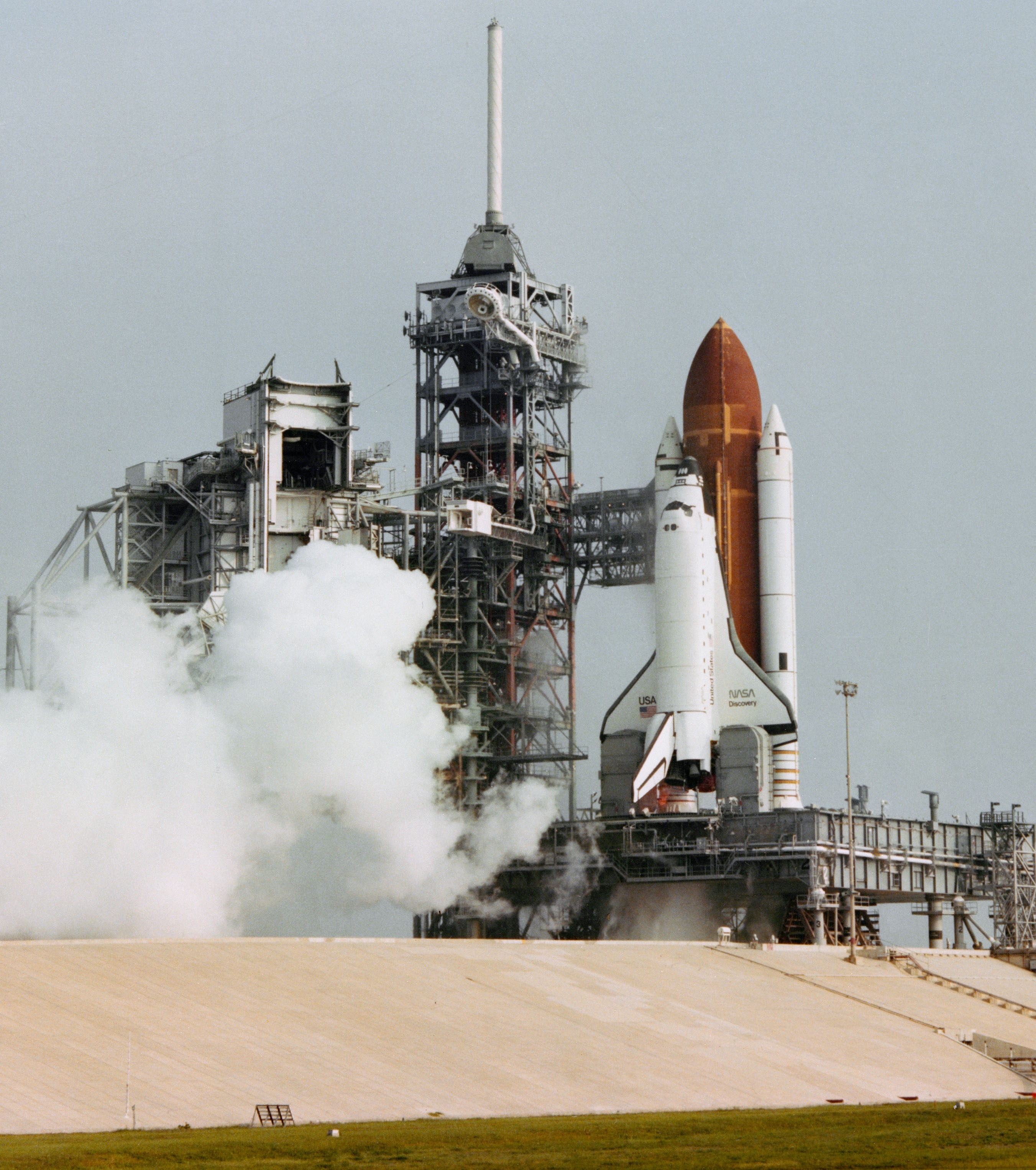
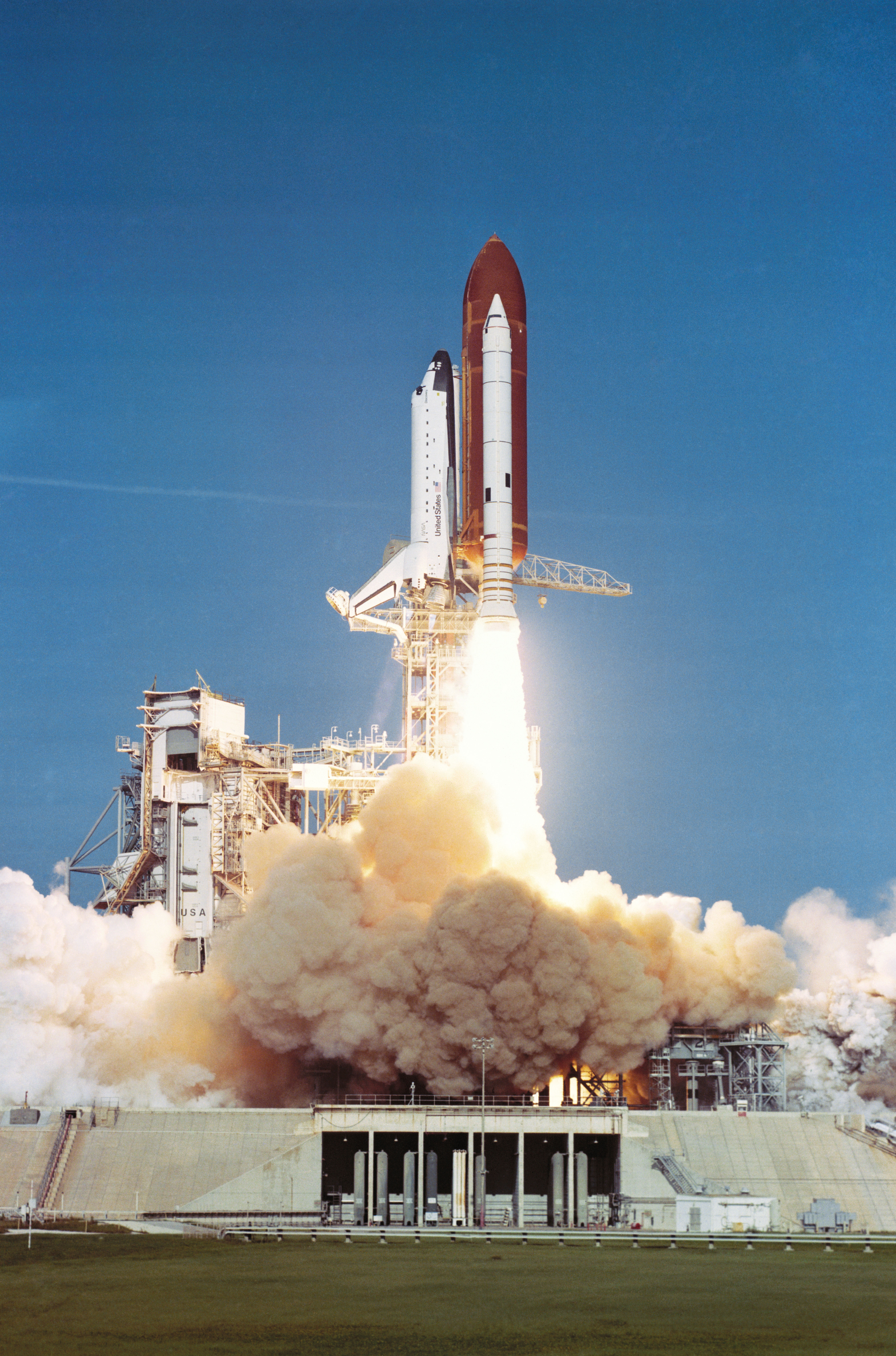
Left: The Flight Readiness Firing of Discovery’s three main engines. Middle left: With Discovery as a back drop, STS-41D astronauts Michael L. Coats, left, Charles D. Walker, Steven A. Hawley, Judith A. Resnik, Richard M. “Mike” Mullane, and Henry W. “Hank” Hartsfield pose for photographers following the countdown demonstration test. Middle right: The launch abort. Right: Discovery finally takes to the skies!
Four months later, on May 12, workers towed Discovery from the OPF to the VAB and mated it to an External Tank and twin Solid Rocket Boosters. The entire stack rolled out to Launch Pad 39A on May 19 in preparation for the planned June 25 launch of the STS-41D mission. As with any new orbiter, on June 2 NASA conducted a 20-second Flight Readiness Firing of Discovery’s three main engines. On June 14, the six-person crew participated in a countdown demonstration test. They boarded Discovery on June 25 for a launch attempt that aborted at the T minus nine-minute mark due to a failure of Discovery’s back-up General Purpose Computer. Technicians replaced the failed unit with one from Challenger for another launch attempt the next day. This time Discovery’s onboard computer aborted the launch four seconds before liftoff but after two of the three main engines had already ignited, resulting in some anxious moments in the crew compartment. To ease the tension, Hawley is reported to have said something along the lines of, “Gee, I thought we’d be a little higher when the engines shut off.” To make matters worse, a hydrogen fire at the base of the launch pad activated the fire suppression system, forcing the crew to evacuate the spacecraft under a deluge of water. The problem with the center engine required a replacement that engineers completed at the pad between July 3 and 5. But the delay caused NASA managers to shuffle payloads and launch schedules, and that required Discovery’s return to the VAB on July 14. Workers destacked the orbiter to return it to the OPF for the payload changes. That completed, and after restacking in the VAB, Discovery returned to Launch Pad 39A on Aug. 9 for a launch attempt 20 days later. A hardware problem resulted in a one-day delay, and finally on Aug. 30 Discovery lifted off on its first mission to space.
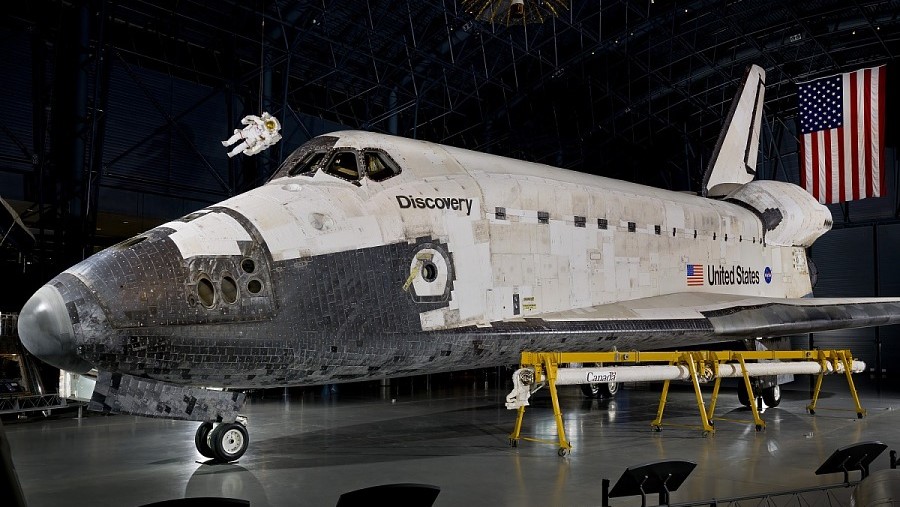
Space shuttle Discovery in the Smithsonian Institution’s Stephen F. Udvar-Hazy Center of the National Air and Space Museum in Chantilly, Virginia. Image credit: courtesy National Air and Space Museum.
In the course of its 39 missions spanning more than 26 years, Discovery flew virtually every type of mission envisioned for the space shuttle, including government and commercial satellite deployments and retrievals, launching and servicing scientific observatories such as the Hubble Space Telescope, resupplying the Russian Mir space station, and assembling and maintaining the International Space Station. Discovery also flew the return to flight missions after both the Challenger and Columbia accidents. Discovery flew its final mission, STS-133, in February 2011. The following year, the Smithsonian Institution’s National Air and Space Museum placed space shuttle Discovery on display at its Stephen F. Udvar-Hazy Center in Chantilly, Virginia.
What's Your Reaction?








